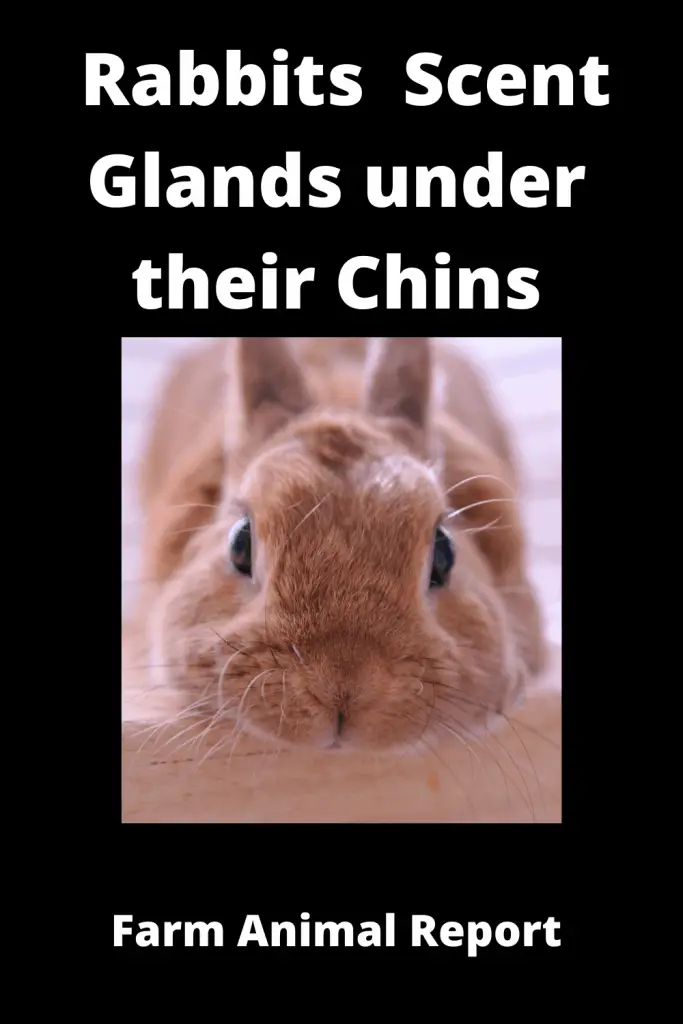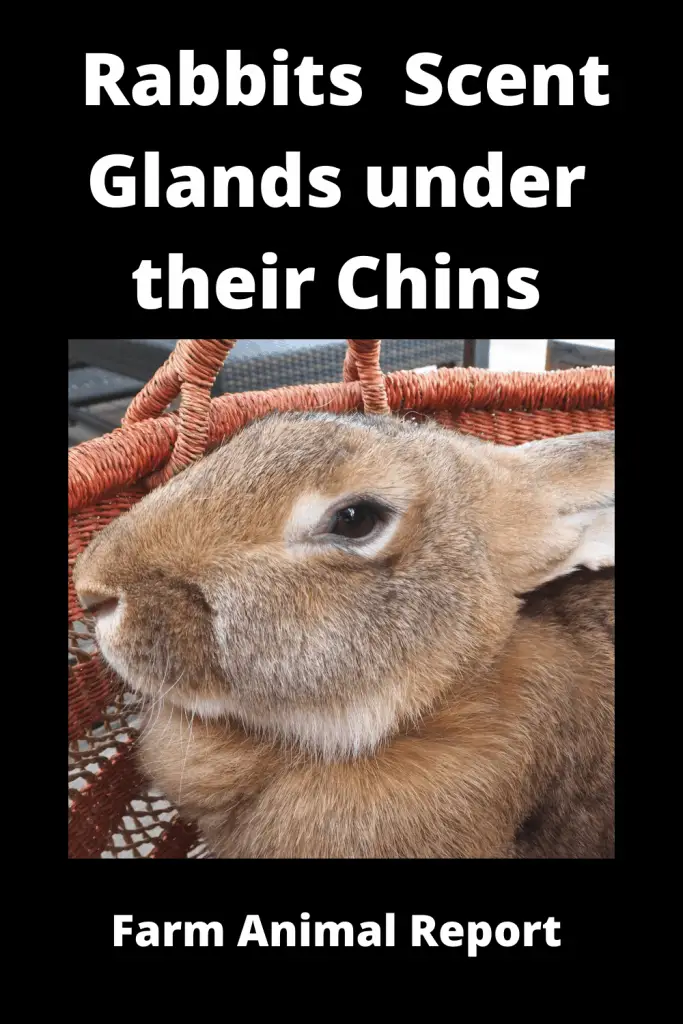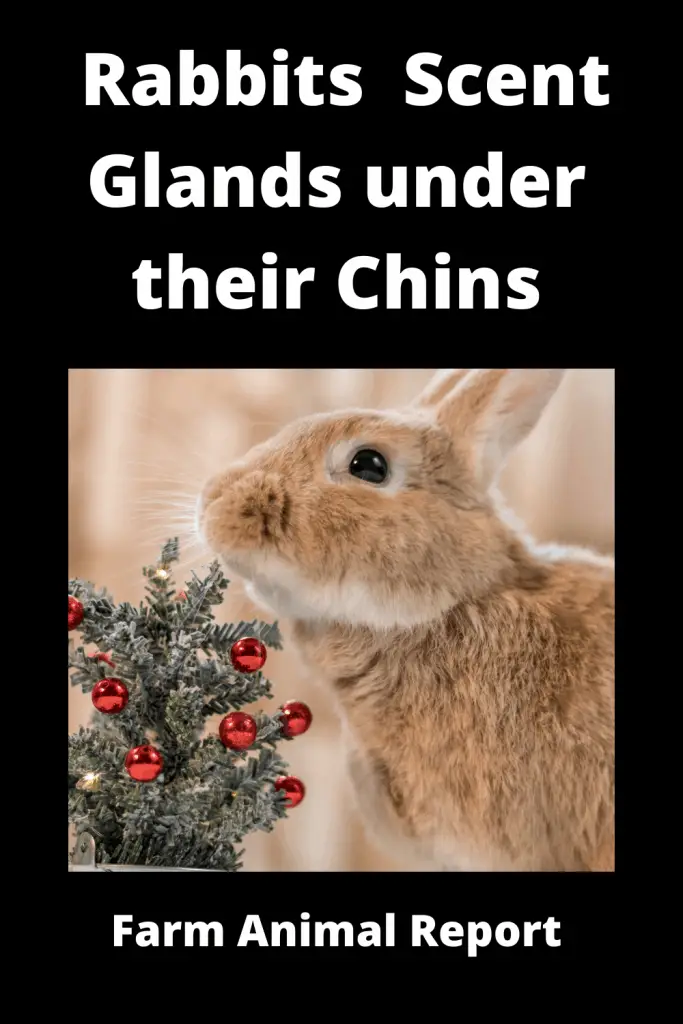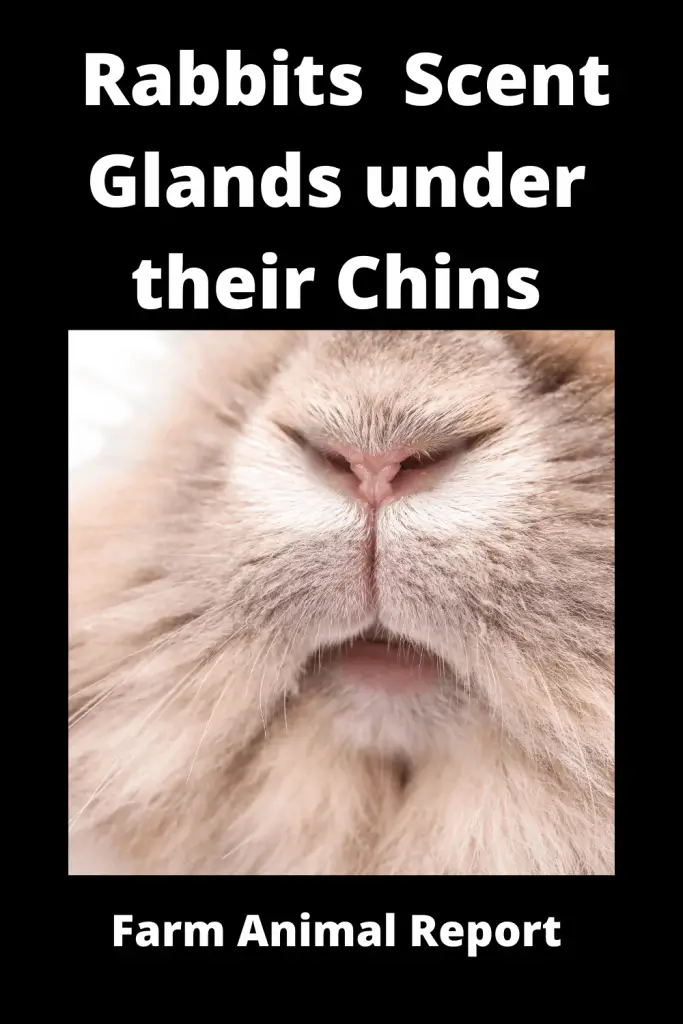As Whole Rabbits have scent glands located beneath their chin. Rabbits not only have scent glands around their anus but also under their chin when they rub their chin, They use this for territorial marking. They leave Marking by 1) Chinning (scent Glands), 2) Urine Spraying 3) Female mark Her Kits with the scent gland 4) Leaving fecal balls. Rabbits scent Glands at times need to be cleaned.
Why Do Rabbits Have Scent Glands under their Chins.
If You are Interested in why Rabbits have scent Glands and you are interested in commercial rabbit farming or you are thinking about rabbit farming and you want to know about the selection of animals, feeding guidelines, and their management. Our Articles Reference an Article w/ Videos, the Majority written by Veterinarians.
In the wild, rabbits live in groups and are very social animals. As pets, they do not like to be alone. Your rabbit will be happier if she has a rabbit buddy. So please consider getting two rabbits at a time. Rabbits establish male and female hierarchies to keep order within the group. rabbit scent gland under chin

If you are going to own a pair of rabbits, there is usually less competition if you have a male-female pair rather than a same-sex pair. Of course, your rabbits should be same sex or Neutered / Spayed, to avoid offspring.
Check Out Amazon for Resources about Breeding Rabbits
You can also Read our Guide –18 Ways to Make Money by Rabbit Farming—Extensive Guidelines for Rabbit Farmers
Rabbits are social, they have developed a marking system to communicate with each other. There are three systems of marking used by rabbits;
Why Do Rabbits Have Scent Glands under their Chins / Reasons
3 Methods of Rabbit Marking
1 – Chinning
Chinning; Your rabbits have scent glands on their chins, just as cats have on their cheeks. Rabbits rub their chin on items around their territory to mark it. They may even rub on you. Rabbits should be allowed to do this because it makes them feel more comfortable in their environment.
Scent-marking is a common behavior of rabbits, whereby their scent glands are used to mark both animals and inanimate objects. Rabbits are strongly territorial, and both sexes release scent signals in the urine and from specialized skin glands found over the body.
The anatomic location and morphology of these glands, and the behaviors used to disperse the secretions, have been investigated for the chin, anal, inguinal, and Harderian glands.

Chin glands, which are specialized submandibular glands opening onto the underside of the chin, are used by rabbits to mark almost any physical feature in their environment (see additional information on chinning in Communicative Behaviors).
The pair of pocketlike perineal glands known as the inguinal glands and the harderian glands, located around the eye, are both believed to release pheromones that may serve as sexual attractants in both sexes. The size of the glands and degree of marking are androgen-dependent and related to the level of sexual activity.
Males mark more frequently than do females, dominants of both sexes mark more frequently than do subordinates, and dominants mark most in the presence of subordinate rivals.
Under natural conditions, both bucks and does in their own territory, surrounded by their own odor and that of their clan, win two-thirds of all aggressive encounters.
Lehmann has suggested that the scent-marking of individual animals in a group may represent a form of group identification.

Large, fibrous fecal pellets can act as a vehicle for these anal gland secretions. Besides the apparently random distribution of pellets throughout their home range, rabbits also deposit pellets at special “dung-heap” or “latrine” sites.
Bell believes that latrine maintenance may serve several functions: the recognition of own or familiar odors at these sites may have a “confidence-enhancing” effect; the “strangeness” of any odors may inform an intruder that the area is occupied;
latrines serve as loci for the indirect exchange of olfactory information among members of the same social grouping and contribute to the regulation of population density by inhibiting reproduction in socially subordinate animals.
Female rabbits will mark their kits with chin and inguinal gland secretions and are openly hostile to young that are not their own. They will normally harass young from their own colony, but will actually pursue and kill young from other colonies.
Even kits of a doe, smeared with the odor from other rabbits, are attacked and killed. Minimally, Does will reject strange kits that do not smell the same as the rest of the litter.
Surrogate Mothers / Kits
Successful cross-fostering therefore not only requires having healthy kits with the energy to suckle but also camouflaging their scent by rubbing in the nest bedding and placing them at the bottom of the litter pile.
Enhancement of olfactory cues during mating and nursing has been successfully exploited by rabbit breeders to increase reproductive performance and yields.

However, the reproductive component of social olfaction is only one part of a rabbit’s scent-marking repertoire, and a significant part of normal behavior involves maintaining what Bell has described as an “optimum odor field.
2 – Spraying Urine
Spraying urine; This is most common in sexually intact male rabbits. Males spray objects within their territory but can also spray other males who are lower-ranking and females during courtship.
It is not uncommon for pet rabbits to spray objects around the house or even owners (as part of a courtship ritual). Neutering the rabbit usually eliminates this problem.
If your rabbit is already neutered, spraying or inappropriate urination may be done for a different reason. Please consult your veterinarian for advice.
3 – Marking with Rabbit Pellets / Poop
Defecating; Your rabbits will deposit most of their fecal balls in a designated area, such as their litter box. However, they will also distribute fecal ba lls around the living area. This is a natural behavior performed in the wild to mark a rabbit’s territory. Therefore, do not punish this behavior.
Digging
Digging; In the wild, rabbits dig warrens (dens) to protect themselves from predators and the elements. To fulfill their needs with regard to hopping and exploring, your rabbits need to have daily supervised exercise time outside their cage.
However, when your rabbits are loose in the house, they will have a natural urge to dig and may damage items in the house if not provided with an appropriate outlet. Rabbits may especially enjoy digging carpet edges, rugs, pillows, and furniture.
Please do not allow your rabbits to have access to anything valuable or dangerous while you are teaching them what items are acceptable to dig on. You can place heavy objects in corners to block them from carpet edges. Allow your rabbits to be only in a safe rabbit-proof area, and always supervise their activity.
Giving your rabbits an appropriate digging outlet is the best way to prevent them from damaging your home. If your rabbits are allowed outside, allow them to dig in designated secure spots in your yard. Always supervise them to ensure that they do not escape and are safe from predators.
If your rabbits are strictly indoors, provide them with an untreated wicker basket filled with hay or an old pillow or rug to dig on.
If your rabbits dig on inappropriate items, interrupt their behavior by clapping your hands (try not to scare them) and redirecting them to more appropriate items. Always praise with attention and treats for appropriate digging.

Chewing
Chewing; Rabbits are natural grazers, so they continuously eat small amounts of food throughout the day instead of a few large meals. Consequently, your rabbits have a sometimes-overwhelming drive to chew. When first allowing your rabbits to roam, it is essential to rabbit-proof your house and always supervise them.
Removing valued or dangerous items from their reach is the safest way to prevent chewing on them. Taste deterrents, such as bitter apple spray or citrus-scented cord protectors, are unreliable, and their successful use depends on the individual rabbit. In the beginning, give access to a small area only under strict supervision. As your rabbits learn what is appropriate to chew on and what is not, you can gradually increase their access to other areas of your home.
If the chewing urge is not redirected to safe items, your rabbits can destroy your house and hurt themselves (e.g., getting shocked by chewing on TV cords). Ensure that your rabbits always have access to hay or toys (i.e., paper towel rolls, sisal rope toys, phonebook, etc.), and praise them for chewing on these.
If they chew on something inappropriate, interrupt your rabbits by clapping your hands and redirecting them to a toy. Chewing is essential for mental stimulation and dental health and so should be encouraged instead of discouraged.
Coprophagy – Night Pellets – Two Types
Coprophagy; Coprophagy is the act of eating fecal material. Although you may find this disgusting, your rabbits have to practice coprophagy daily to stay healthy. Rabbits produce two types of fecal balls.
One type, called a cecotrophy, is softer, larger, and rich in nutrients. The second type is harder, smaller, and devoid of nutrients. Your rabbits will eat the cecotrophy to absorb the maximum quantity of nutrients from their food.
This is a natural behavior that is essential to their health. Therefore, coprophagy should not be interrupted or discouraged. In fact,
if one of your rabbits stops eating her cecotrophy, she is sick and needs to be seen by a veterinarian.
Grooming
Grooming; Rabbits are naturally very clean animals and spend hours each day grooming themselves, as do cats. Also similar to cats, rabbits can get hairballs, especially during shedding season.
Unlike cats, rabbits cannot vomit, so hairballs can get stuck in their intestines. To prevent hairball problems, it is important that you feed your rabbits a high-fiber diet. This is an especially important problem to keep track of in Wool Producing Rabbits, Angora’s Breeds.
To catch a problem early, monitor your rabbits’ behavior and their fecal balls daily for consistency, volume, and shape. If one of your rabbits eats less, grooms less defecate less, seems to have difficulties defecating, or has diarrhea, seek medical attention.
Care of Scent Glands / Chin
Care of chin; Check the underside of their chin for a waxy type of buildup from their scent gland.
If you find this condition, you can try to wash it off with warm water, but it will often be mixed in with their hair and will need to be cut off with cuticle scissors. Rabbits that often drink from bowls can sometimes get dermatitis, so they also look for redness and irritation.
In healthy rabbits, of good body weight and able to clean themselves, there is usually no problem with these glands and they should not need to be examined.
For overweight rabbits, or those with mobility problems the glands can become overfilled with wax and very smelly. In more severe cases they can also become infected.
If your rabbit is unable to clean herself, then you need to keep a check not only on urine or faces sticking onto the underside, but also the scent glands. If there is a lot of wax and the area is particularly smelly, you will need to clean the glands.
This needs to be done very gently and carefully. Dampen a cotton bud (swab) and use that to very gently ease excess wax out of the gland. It’s not a pleasant job but can be done quickly and shouldn’t hurt your rabbit at all.
Rabbit Breeder Associations
| Rabbit Association | Location | Link |
|---|---|---|
| American Breeders Association | United States | ARBA |
| House Rabbit Society | California | HRS |
| Ohio States Rabbit Breeders Association | Ohio | OSRBA |
| Livestock Conservancy | North Carolina | LC |
| Rabbit Welfare Association and Fund | United Kingdom | RWA |
| British Rabbit Council | United Kingdom | BRC |
| European Association of Rabbits.... | Europe | EAP |
| Australian National Rabbit Council | Australia | ANRC |
| Australian Rabbit House Society | Australia | ARHS |
| ARBA - Rabbit Shows | United States | ARBA - Shows |





